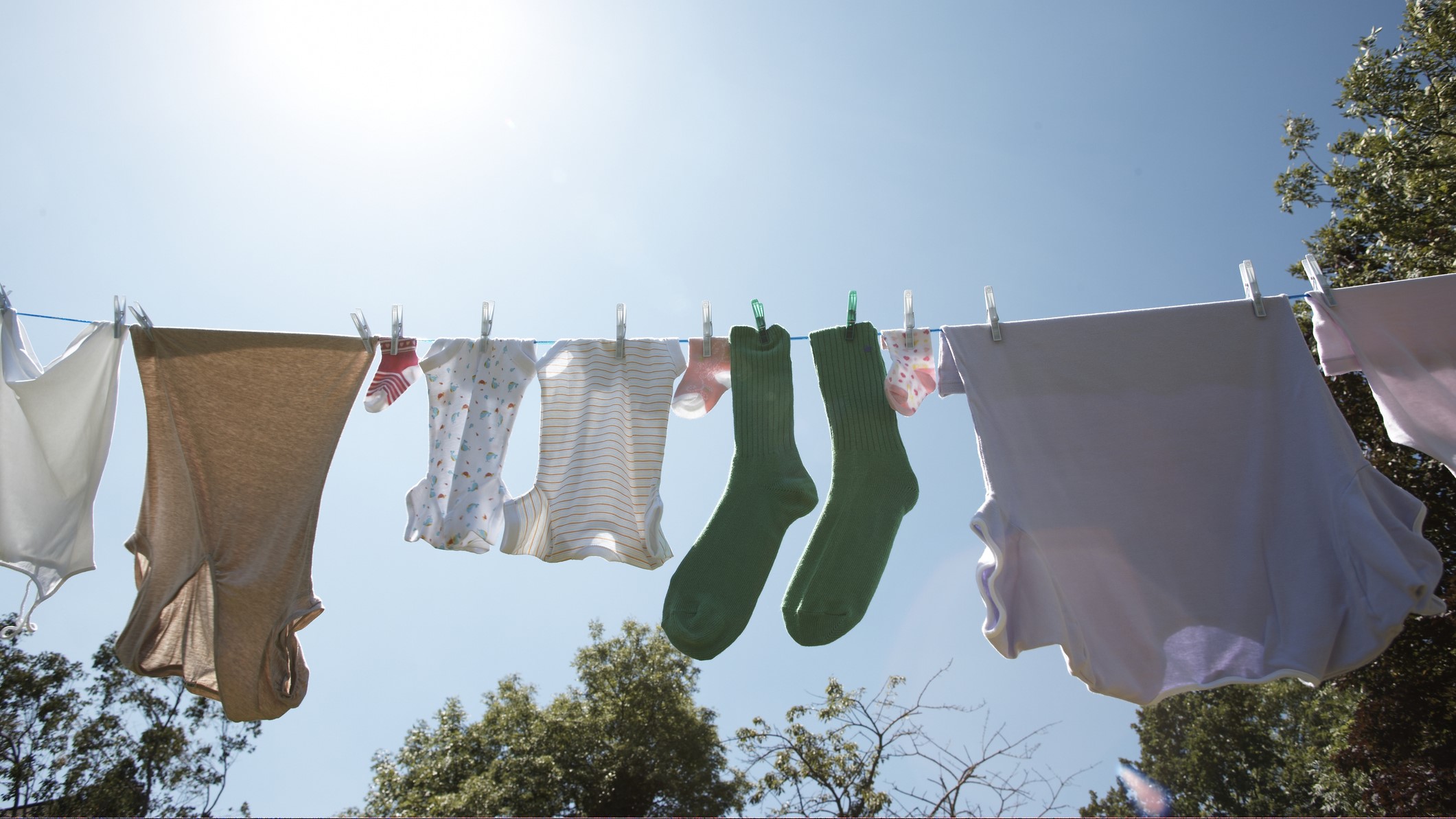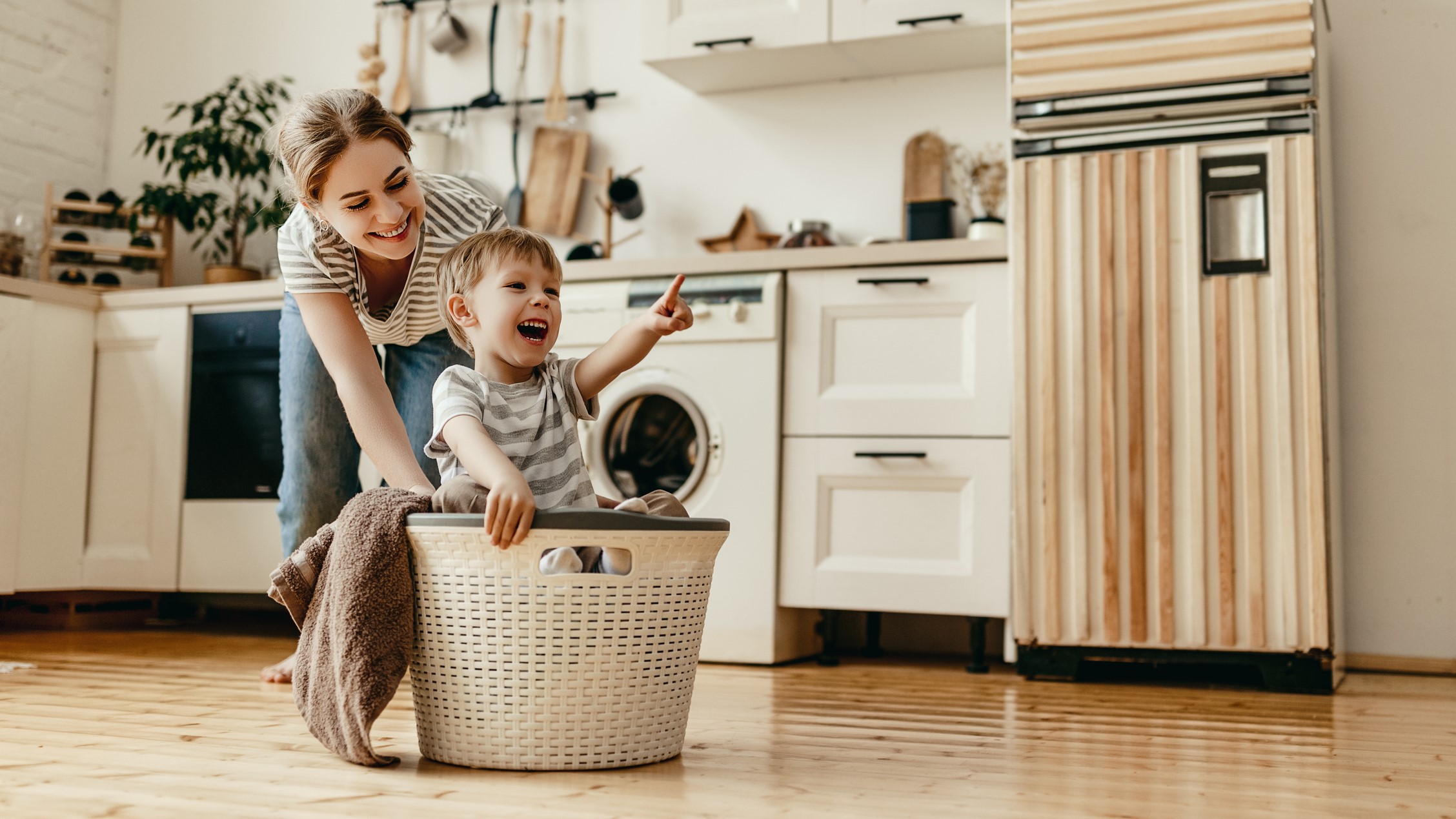It’s always a good time to consider how you can make your laundry routine a bit more eco-friendly. We’ve put together some tips on how to create a sustainable laundry system that will save on emissions, unsustainable materials, and energy costs. The good news is that companies are increasingly innovating and coming up with smart new ideas about how to make their machines more efficient, and that includes the best washing machines.
Even if you do own an eco-friendly washer, that doesn’t mean the work is done. There are plenty of steps you can take to make your routine even more eco-friendly, and it could be as simple as switching to another of the best laundry detergents or wearing those jeans one more day before giving them a wash.

1. Take a look at what you’ve already got
One of the best ways to reduce the carbon footprint of your laundry routine is to do whatever it takes to preserve the life of your existing washer and dryer machines. That means knowing how to clean a washing machine, taking proper care of it, and opting for repairs instead of replacements where possible. Tossing out a perfectly good large appliance means it won’t live its full life expectancy, and all the energy and materials that have gone into making it could be wasted.
That said, you should also evaluate just how old your machine really is. The average life expectancy of a washing machine is ten years, and according to Energy Star, “it's estimated that there are 74 million top-loading washers and 24 million front-loading washers - 26 million of which are at least ten years old, still in use across the country.” Older washers are less efficient and can cost consumers about $4.7 billion each year in energy and water. As more advanced machines come out, make strategic decisions about when to switch. While the up-front cost of buying a washer is intimidating, it can also cost you a lot of money in water and energy costs to keep an old one running past its best.
When you’re ready to switch to a newer machine, make sure you dispose of your old machine in the most environmentally friendly way possible. If it’s still got some life left in it, you can try and find ways to donate it or list it on eBay or other online auction sites to get a bit of money back and give someone else a chance to make the most of it.
2. Choose an energy-efficient machine
When we review laundry machines, we always look out for Energy Star certification. Energy Star washers “use about 25% less energy and 33% less water than regular washers” and can save $370 in running costs. A lot of these models opt for spraying instead of soaking your laundry, which cuts back on water usage, and larger capacities to tackle more laundry with fewer loads.
Some smart features you’ll find on Energy Star models include moisture sensors that adjust depending on load size, and according to Energy Star, “efficient motors used in Energy Star certified washers spin clothes two to three times faster during the spin cycle to extract more water.”

3. Load the machine efficiently
Loading your machine correctly could be one easy way of making your laundry routine more sustainable. If you’re used to throwing items in the wash as and when you need them, you may be wasting water and energy on under-filled laundry cycles.
A washing machine or dryer should only ever be filled to around two-thirds of its maximum capacity. This is to allow room for water to fill the machine and for clothes and bed sheets to have space to be cleaned properly.
You should never cram your laundry into the machine until it can’t fit anymore because this can lead to your clothes being inadequately cleaned (and you subsequently needing to give them another spin). This can also damage your machine, which is not good for its lifespan.
Another important thing is using your judgment to decide if something really needs to go in the laundry. There are some things, like socks and underwear, that need to be washed after every use. Other items like towels and jeans don’t need to be washed quite as regularly, so take a moment to consider how many uses they’ve had and whether they really need to be washed before you put them in the machines.
4. Cold wash
Use a cool wash setting where possible. According to The Ethical Consumer, a wash cycle at 70°F consumes around 70% less electricity than one at 140°F. When we wash the dishes, we’re used to using hot water, but the truth is that most modern detergents are designed to work with lower-temperature washes.
You should always check the guidelines on the tag of your laundry before washing them, and check out our guide on what coronavirus means for your laundry routine, but using lower temperatures can actually come with the added advantages of not irritating and damaging the fabric of your clothes as they wash.

5. Air dry where possible
While the best dryers will come with eco-friendly cycles, opting for air drying where possible can save you the effort of using a dryer at all. In the warmer months, there’s nothing nicer than fresh air-dried laundry, so if you have any outdoor space or a sunny spot to set up a drying rack, this is a great way to dry your clothes 100% naturally.
Particularly when it comes to the bulkiest items, such as towels and bed sheets, air drying can be far more efficient than using a drying machine. Because they are so large and can hold a lot of water, it takes a lot of energy for a dryer to tackle these items, and they often can come out still feeling damp. Instead of putting them back in the dryer again, leave them out on an airer to cool off a bit. This will allow the steam to escape and give your dryer a rest.

